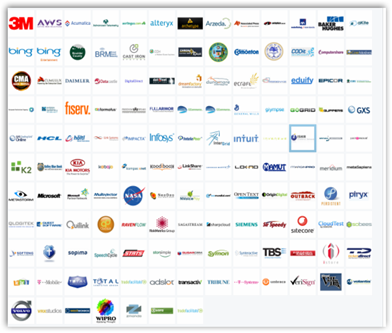Back a couple years ago I had a discussion with Mike Naimoli and that was when Azure services were just introduced so by reading his update you can see how  fast things are developing with using the cloud. Microsoft Azure cloud has moved along and you can read his entire post at the link below and one highlight I included was the use of high powered computing below of reducing the computing time from 7 hours to 7 minutes, that’s big.
fast things are developing with using the cloud. Microsoft Azure cloud has moved along and you can read his entire post at the link below and one highlight I included was the use of high powered computing below of reducing the computing time from 7 hours to 7 minutes, that’s big.
A Deep Dive into Microsoft Life Sciences Today and in the Future – Interview with Michael Naimoli
I remember reading a while back about one of the pharmaceutical companies with their research division running a query and having to either wait to get on the  network or once it was set in motion, well it took a few hours to run. We are talking massive amounts of data and analytics being processed of course so if you were a research person you would set it in motion, go have lunch and whatever else was on your agenda and come back later. He mentions how Glaxo Smith Kline has reduced their cost by 30% by using the cloud and I might guess we have some energy consumption included here as it takes a lot of power to run. Just a quick note of my own here, this is where we need to educate our folks in Congress as last year they didn’t look to fund cloud services, so again a need for some additional information as to the savings and other benefits to be realized.
network or once it was set in motion, well it took a few hours to run. We are talking massive amounts of data and analytics being processed of course so if you were a research person you would set it in motion, go have lunch and whatever else was on your agenda and come back later. He mentions how Glaxo Smith Kline has reduced their cost by 30% by using the cloud and I might guess we have some energy consumption included here as it takes a lot of power to run. Just a quick note of my own here, this is where we need to educate our folks in Congress as last year they didn’t look to fund cloud services, so again a need for some additional information as to the savings and other benefits to be realized.
Below is an image of the case study pages with several names listed you might recognize and you can link here to read more. Microsoft in Life Sciences “plays in the sandbox”, in other words works and integrates with other technologies to provide a clean and useful interface for the end user. BD
When it comes to technology innovation, life sciences companies are typically early adopters. This is a research-intensive industry that generates massive amounts of data, and this data needs to be securely and seamlessly shared across businesses and borders—in real-time.
At the same time, the industry is desperately searching for ways to boost innovation. There is a $25 billion tidal wave of patent expirations coming this year, and R&D costs are rising. So it shouldn't be a surprise to any of us that the most forward-thinking life sciences firms are ramping up the pace of innovation, thanks in part to technologies that fuel collaboration across borders, faster processing of massive amounts of data, and information sharing in real-time to ultimately enhance discovery and speed the time to market.
HPC on Steroids – Cloud-based computing, like Microsoft Azure, gave life sciences greater access to compute intensive applications such as 3D. By running high-performance computing on-demand on a cloud-based platform, we've already seen data processing time reduced from 7 hours to just 7 minutes. That's a HUGE improvement for companies racing to make the next big discovery.
Pharma Takes to the Cloud: IT Trends for 2011 - Microsoft in Health - Site Home - MSDN Blogs




0 comments :
Post a Comment